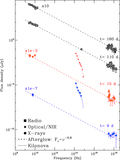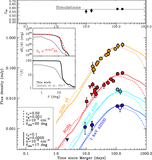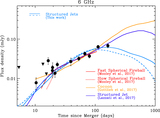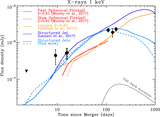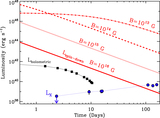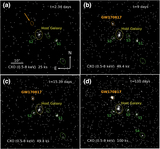Image Details
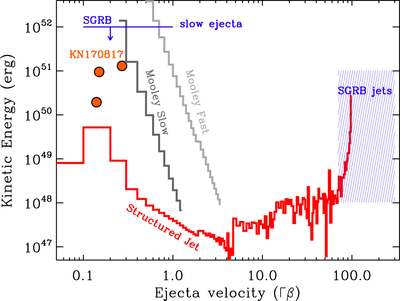
Caption: Figure 3.
Kinetic energy structure of the ejecta of GW170817 for quasi-spherical outflows from Mooley et al. (2017; gray lines) and for the structured jet that we present here (red line). Orange filled dots: kinetic energy of the red, purple, and blue kilonova component associated to GW170817 as derived by Villar et al. (2017). Blue lines: SGRBs. For the SGRB slow ejecta we report a representative limit derived from the analysis of very late-time radio observations from Fong et al. (2016), while the shaded area marks the beaming-corrected Ek of the jet component in SGRBs as derived by Fong et al. (2015) for ϵB = 0.1 (note that smaller values of ϵB would lead to Ek that would extend to larger values, see e.g., Fong et al. 2015, their Figure 7). This plot highlights the difference between quasi-spherical outflows (which lack an ultra-relativistic component and require a large amount of energy to be coupled to slowly moving ejecta Γ < 2) and structured ultra-relativistic outflows (which have properties consistent with SGRBs and can be energetically less demanding). The peak time of the non-thermal light-curve of GW170817 will constrain the minimum Γβ of the ejecta in quasi-spherical models.
Copyright and Terms & Conditions
© 2018. The American Astronomical Society. All rights reserved.


